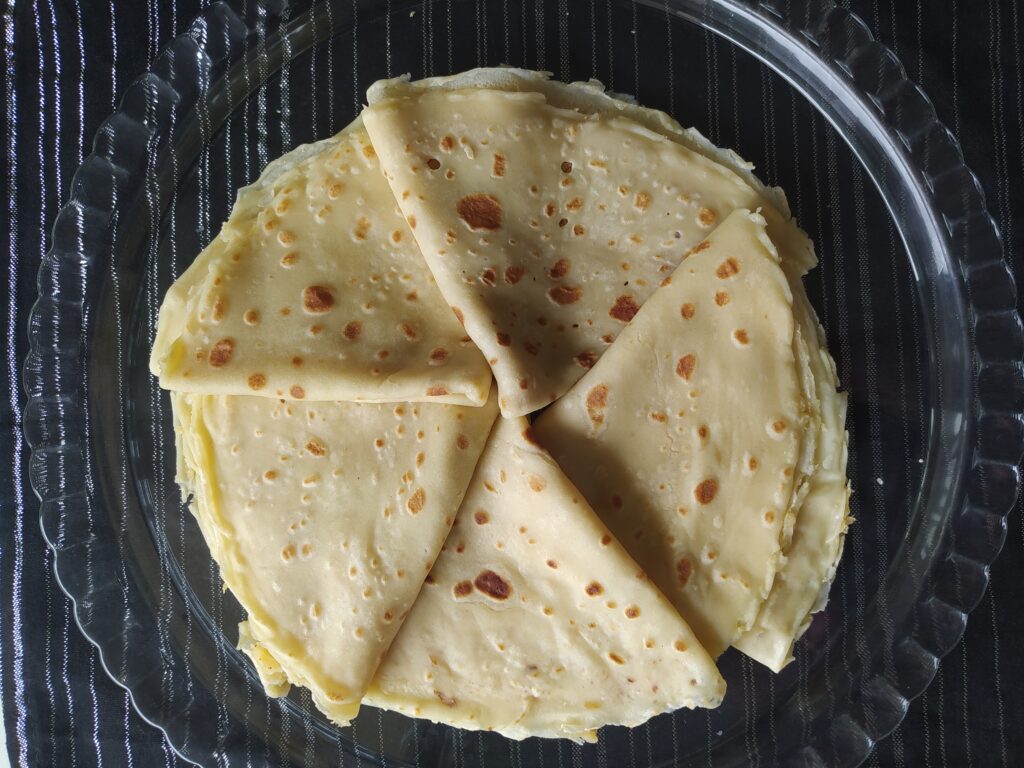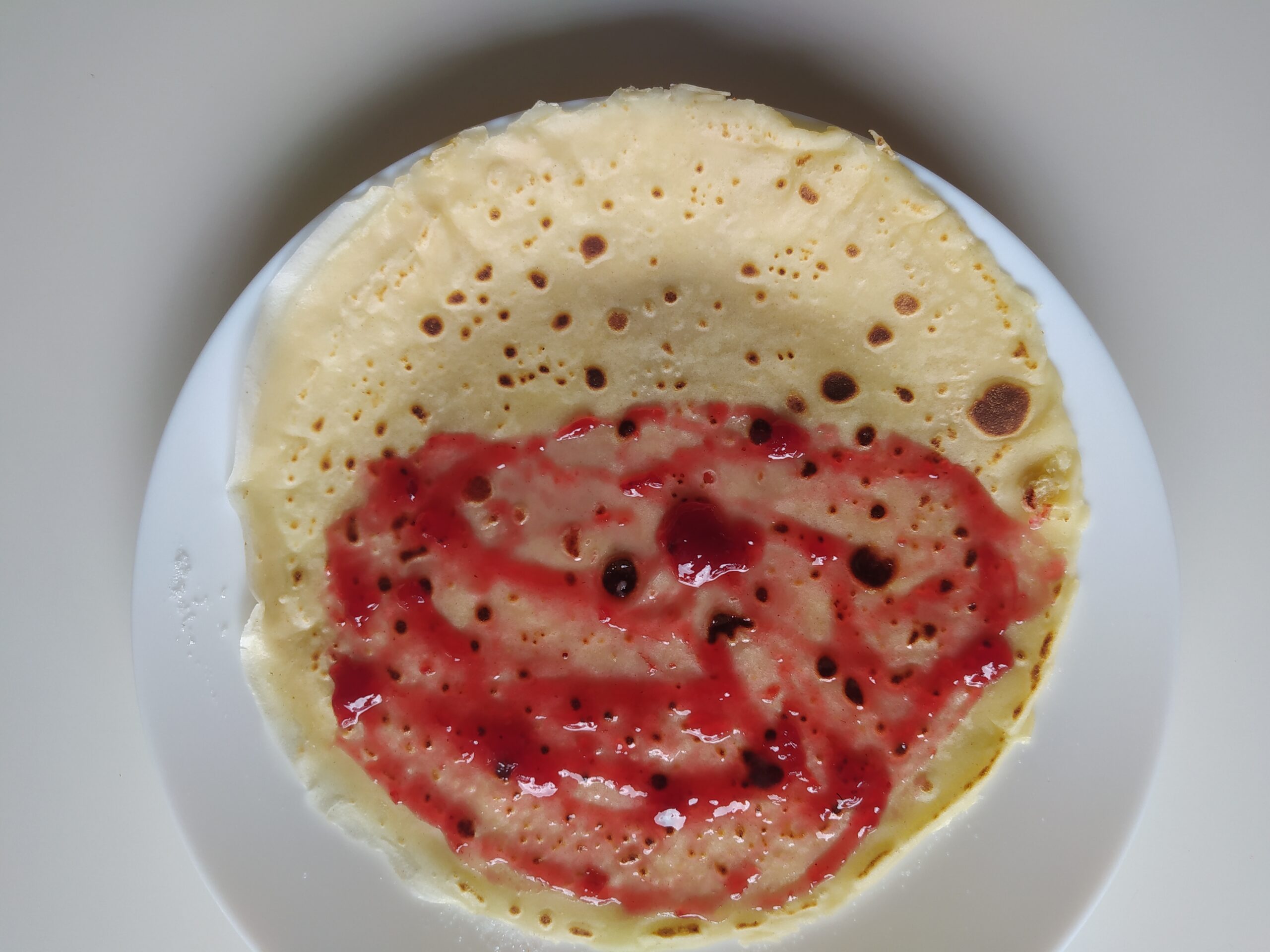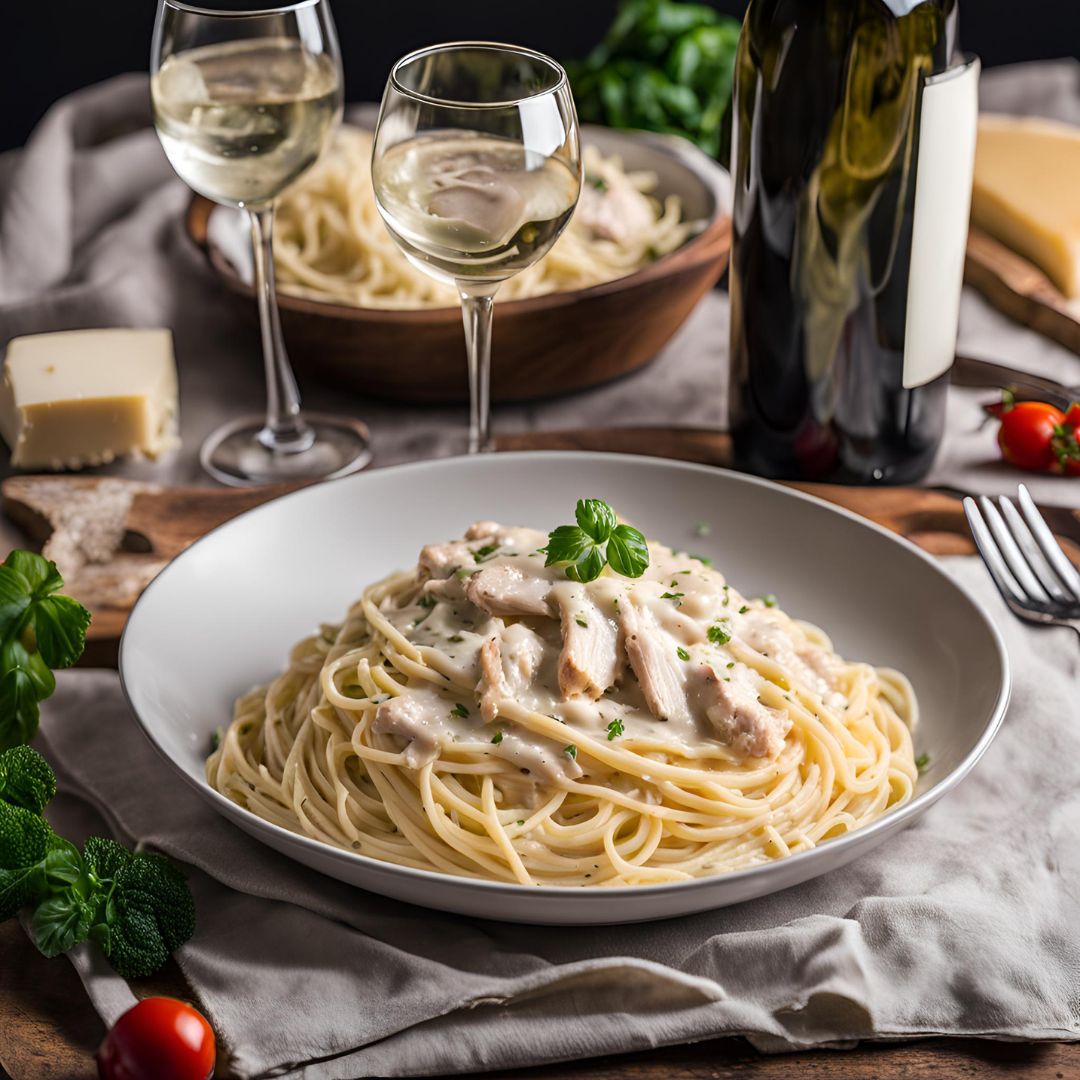Today I am sharing with you my detailed recipe for crepes and some interesting facts about it.
The lightness and adaptability of crepes make them a staple of French cuisine that are loved globally. There are countless options to suit every taste and craving, whether you go for a savory or sweet topping.
Origins of crepes
The word “crepe” is derived from the Latin crispa, which meaning wavy or curly cresp. The French term “cris” or “crespe,” which originally denoted a pleated or wrinkled fabric, is from which this name originates. This is how the term for these thin pancakes with crispy edges and a hint of wave gradually moved from the textile industry to the food industry.
The precise origin of pancakes is difficult to determine because they appear to have existed in human culinary culture from the beginning. Pancakes have actually been around since roughly 7000 BC, when prehistoric men were already cooking their food on flat pebbles. Pancake remnants have also been discovered in certain 2000 BC Egyptian tombs, as well as in Roman tracta during the Roman Empire.
Evolution of crepes
Crepes have seen many changes throughout the ages, including advancements in technology and culture, which have added to their current popularity.
Men were able to make flour from various cereals as soon as the grain mill appeared, which was approximately 500 BC. This allowed for the creation of semi-liquid or liquid pastes that were simple to spread on a flat surface to produce thin, uniform crepes. Due to the presence of gluten, wheat flour in particular has a strong binding power that allows for the creation of an elastic and soft texture perfect for crepes.
The use of butter for cooking pancakes dates back to medieval times, where it was reserved for the upper classes because it was expensive to produce. Butter provides an inimitable flavor and a slightly crispy texture, but its popularization in pancake cooking did not occur until the 16th century with the discovery of modern dairy production techniques.
Over time, the toppings used to garnish crepes have diversified, moving from simple local ingredients (honey, jam, ham, cheese) to more elaborate and exotic combinations (tropical fruits, spices, refined dishes, etc.). Today, we generally distinguish between savory crepes, often made with buckwheat flour and called galettes in Brittany, and sweet crepes made with wheat flour.
Crepes around the world
Even though crepes are a symbol of French cooking, especially Bretonne cooking, they have influenced many other culinary traditions worldwide.
In Russia, we eat blinis, small thick crepes made from buckwheat or wheat flour, often garnished with caviar, smoked salmon or even jam.
The Swiss and Germans love Eierkuchen or Pfannkuchen, crepes with a more compact texture that are generally accompanied by maple syrup or fresh fruit.
In Mexico, we find tortillas, these corn or wheat crepes which serve as the basis for making tacos, fajitas, burritos and other typical dishes.
The famous Japanese Okonomiyaki crepes are a specialty of Osaka and consist mainly of cabbage, egg, meat and seafood.
In the end, it appears that crepes have always existed, although under different names and forms based on the locally available ingredients and the cooking methods used.
What is crepe made of?
crepe is made of very simple, easily available and cheap ingredients.
The first ingredient necessary to make a recipe for crepes is wheat flour. It is thanks to the wheat flour and the gluten contained in it that we will be able to achieve soft and elastic crepes.
The second ingredient for crepe recipe are eggs. Eggs will enable the crepe to not break while cooking. It will make sure the crepe stays together while cooking.
The third ingredient of a traditional and tasty recipe for crepes is butter! Butter will not only give that subtle and so delicious taste to crepes but it will also give that brownish color. It will also participate in making the crepes soft.
The third ingredient of the recipe is milk. Although milk can completely be replaced by water, the original and traditional crepes recipe is made of milk. However, try it once with water you will be amazed of the result 😉
Finally, a pinch of salt and sugar. Sugar will participate in giving that brown colored aspect to the crepes and will also add some sweetness to the dough. If you add enough sugar in the batter, crepes can be eaten just like that without any filling. It is also delicious!
How to make crepes?
Crepes batter preparation
The first step in recipe from crepes preparation is the preparation of the batter.
Step 1
To do that , you start by pouring the wheat flour in a mixing bowl. You continue by adding the salt and the sugar to the flour and mix it nicely.
Step 2
In the middle of the flour, you create a hole. In that hole you will add the butter, and the eggs.
Step 3
You add 3/4 of the milk/water, and start mixing the ingredients together with hand or with an electric hand mixer. Mix it well until the batter is lump free add a bit of liquid is necessary. When the batter looks good, add the rest of the liquid and mix again.
The consistency of the batter should be liquidy, not too thick.
Step 4
For getting the best crepes, the batter should be left for rest between 30 minutes to 2 hours
Cooking crepes
Step 1
It is now time to cook the crepe, according to the kind of pan you are using. If you are using a non-sticky pan, just heat up the pan on a high temperature, once it is hot, reduce the flame to medium high temperature, and add a bit of butter to start with. Remove the excess butter with a paper.
Step 2
Now, use a ladle and take some batter in it (approx 85g of batter for one crepe for a 28cm diameter pan). Pour the ladle content in the middle of the pan and quickly do horizontal circles with the pan to spread the batter all over the pan. The batter should cover the entire pan, make sure there is no or very few holes. Once the pan is covered if you still have batter left to cover the first layer of batter already spread in the pan it is because you have too much batter. Reduce the quantity of batter in your ladle for the next crepe. One layer of batter should cover the pan to have perfect crepes.
Let the crepe cook for 2/3 minutes, until you notice the edges of the crepe on the pan are getting dry. At this moment, take a spatula and start removing the edge of the crepe from the pan all around the crepe.
Step 3
Once the edges are free there are 2 methods. The first one is simply to take your spatula and slowly placing it underneath the crepe, under the center of it. Then, lift it and turn it. The second method, is the most famous one and can be done with a non-sticky pan. With the palm of your hand beat the handle of the pan so the crepe comes off the pan, then vigorously make it jump and flip on the other side in the pan.
Cook on the other side, for a few seconds, since the crepe is already cooked it goes very fast on this side. And then place the crepe in a plate and repeat the 3 steps.
How to eat a crepe?
Sweet filling
Then you can spread the filling that you want on one half of the crepe. It can be jam, chocolate spread, fruits, fruit sauce, whipped cream etc…
Savory filling
This recipe for crepe can also be used for savory recipes. In that case simply skip the sugar in the recipe. You can then fill the crepes with white sauce or what is called bechamel sauce with ham, it is delicious! I will post you the recipe of this sauce soon.
You can use cheese, salad, sausage or whatever fillings you may like. The limit will only be your taste :).
No filling
As previously mentioned, these crepes are also delicious without any filling, in that case simply increase the quantity of sugar while preparation the batter.
I hope you will enjoy this recipe as much as we do! Let me know in the comment section if you have tried it and what filling you have used, I am curious to know.
Enjoy 🙂
Some More Interesting Recipes –
Pancakes / Crepe Recipes
Bread and Rolls Recipes
Cookies Recipes
- Pumpkin Chocolate Chip Cookies Recipe
- Chocolate Chocolate Chip Cookies Recipe
- Peanut Butter Cookies Recipe
- Oatmeal Cookies Recipe
- Chocolate Chip Cookies Recipe
Recipe for crepes
Easy and delicious crepes recipe. For a snack, a week end breakfast or even dinner, you will simply want to find occasions to make it over and over again. Let me know what filling you used for yours!
Ingredients
Instructions
Batter Preparation
- Pour the wheat flour in a big bowl. Add the salt and the sugar to the flour and mix nicely.In the middle of the flour, create a hole, in which you add the butter, and the eggs.
- Add 3/4 of the milk/water, and mix the ingredients together with hand or with an electric hand mixer. Mix it well until the batter is lump free, add a bit of liquid is necessary. When the batter looks good, add the rest of the liquid and mix again.
The consistency of the batter should be liquid, not too thick. Optional: For best results, leave the batter to rest at room temperature for at least 30 minutes (if not too hot. If more let it rest in the fridge).
Crepes cooking
Take some batter in a ladle (approx 85g of batter for one crepe for a 28cm diameter pan. 2.53 fl. oz / 75 ml). Pour the ladle content in the middle of the pan and quickly turn the pan to spread the batter all over the pan. The batter should cover the entire pan in 1 layer.
Let the crepe cook for 2/3 minutes on this side, until you notice the edges of the crepe on the pan are getting dry. At this moment, take a spatula and start removing the edge of the crepe from the pan all around the crepe. Once the edges are free slowly place the spatula under the center of the crepe and flip it.
- Cook on the other side, then place the crepe in a plate. Repeat the previous cooking crepes steps until no more batter is left.
Crepes filling
You can spread or add any of the filling you like (jam, chocolate spread, fruits, cream...) on one half of the crepe. Then, fold the crepe twice.
Enjoy :)










Great recipe!